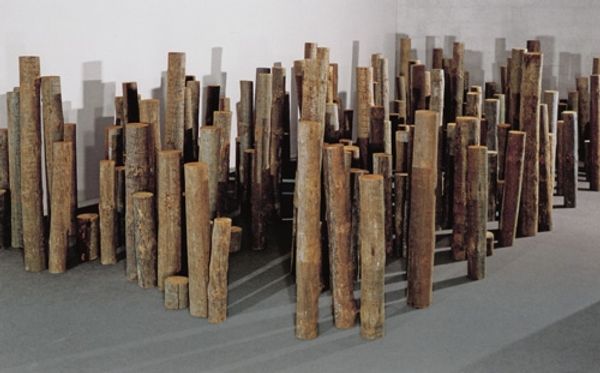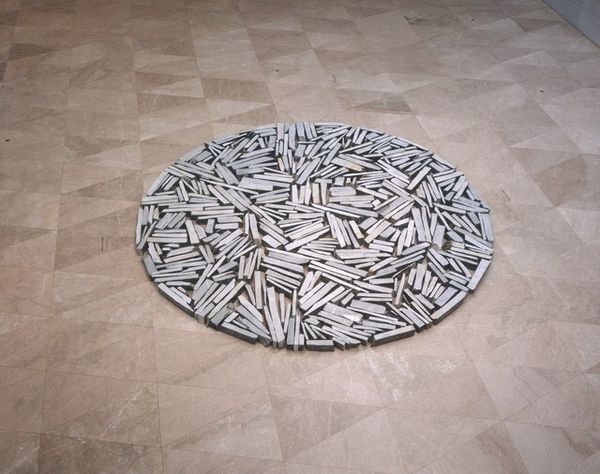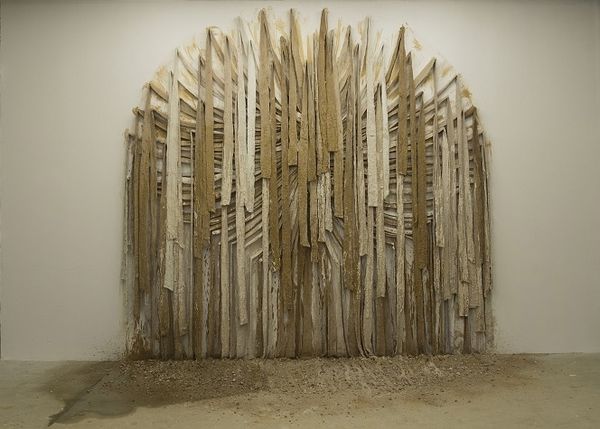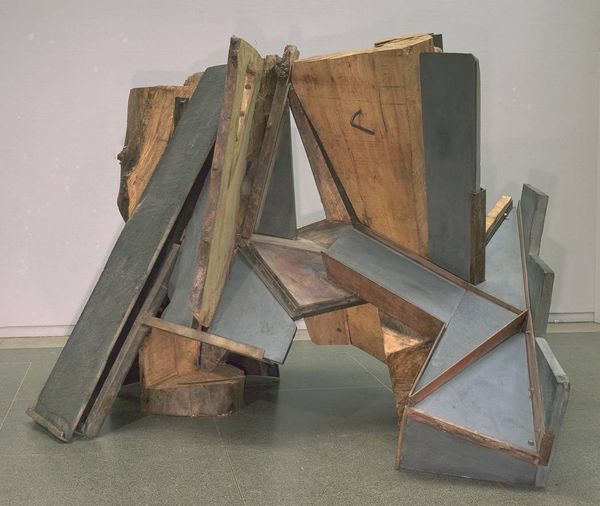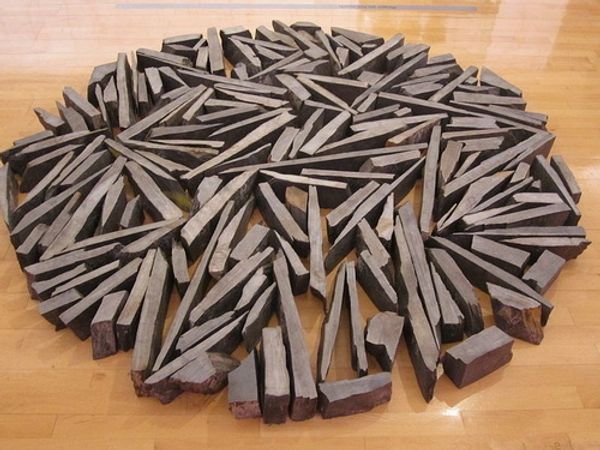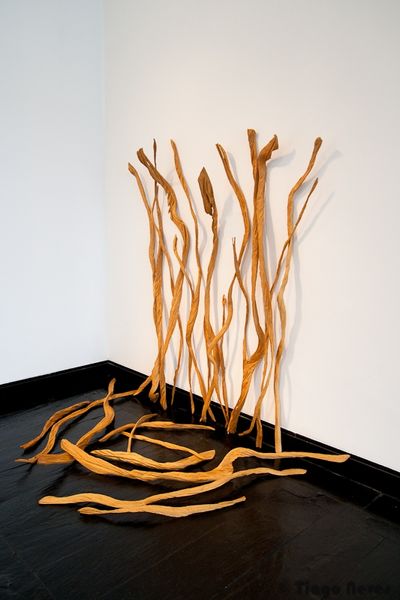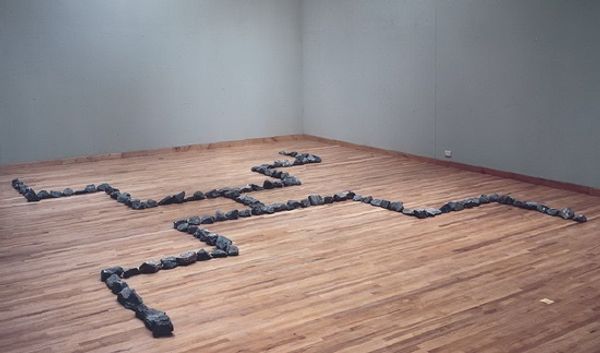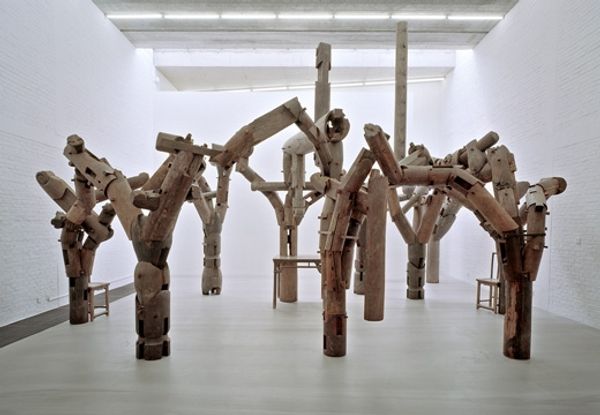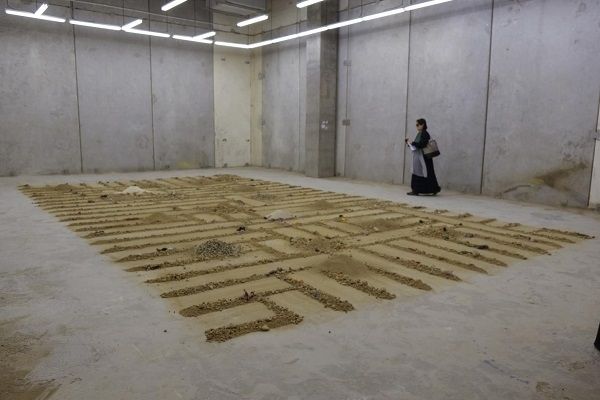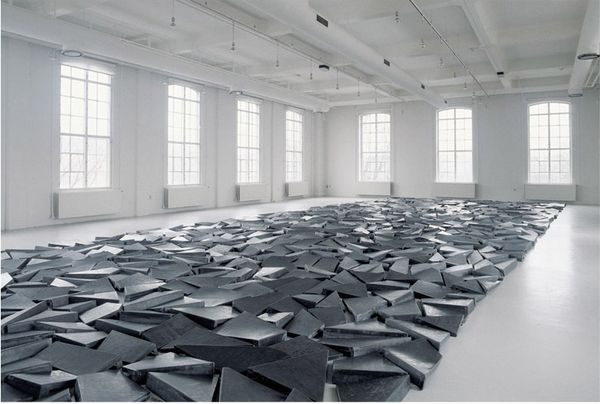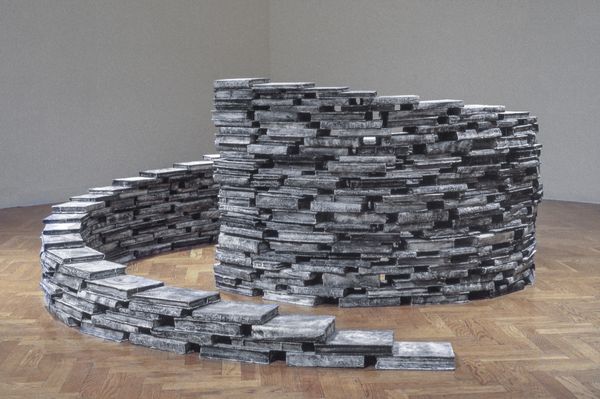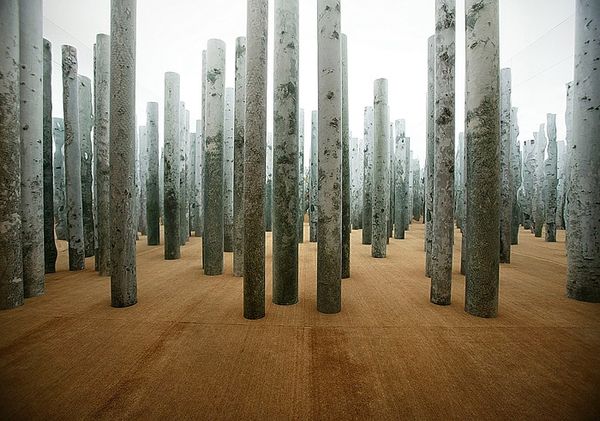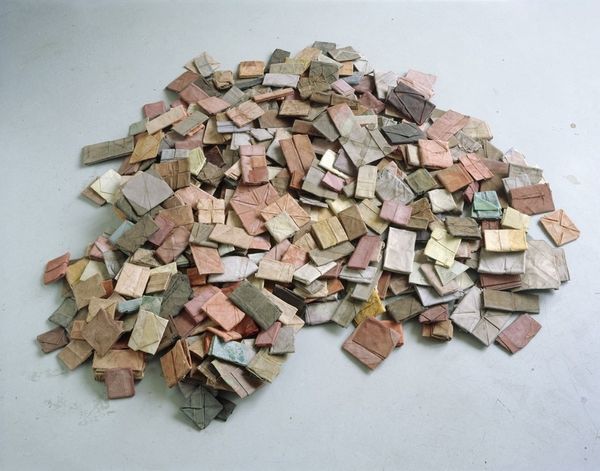
Copyright: © Richard Long | CC-BY-NC-ND 4.0 DEED, Photo: Tate
Curator: Here we have Richard Long's "Slate Circle," currently residing in the Tate Collections. Editor: It looks like a burst of urban decay blooming on the gallery floor. Curator: Long, born in 1945, often brings natural materials into the gallery space, emphasizing their inherent qualities. Look at the process – the deliberate arrangement of slate pieces. Editor: It's more than arrangement; it's about the weight and pressure. Each piece of slate has been carefully placed, a testament to the labor. It speaks to how we extract and consume resources, doesn't it? Curator: Perhaps it is that too. For me, it's more like a meditation. A reminder of nature's constant, albeit slow, processes of change and renewal. Editor: I agree with the processes of change, but from a materialist perspective! Slate itself, formed over eons under intense pressure. It is a testament to geological time, brought here and molded by human hands. It's a stark juxtaposition of industry and nature. Curator: So, a poignant reminder of our entanglement with the natural world, however you see it! Editor: Precisely. A reminder we can, in our own way, be materials shaped by the world around us.
Comments
Join the conversation
Join millions of artists and users on Artera today and experience the ultimate creative platform.
tate 27 days ago
⋮
The slate came from a quarry in mid-Wales which Long passed whilst completing a walk 'From the source of the River Severn to the summit of Snowdon, 60 miles'. In installing the work 214 stones are laid down in an arbitrary pattern within a circle drawn on the ground in pencil with a diameter of 6.60 metres. None of the stones touch and although they are selected at random the fairly even distribution of sizes and lengths is intentional. Gallery label, August 2004
